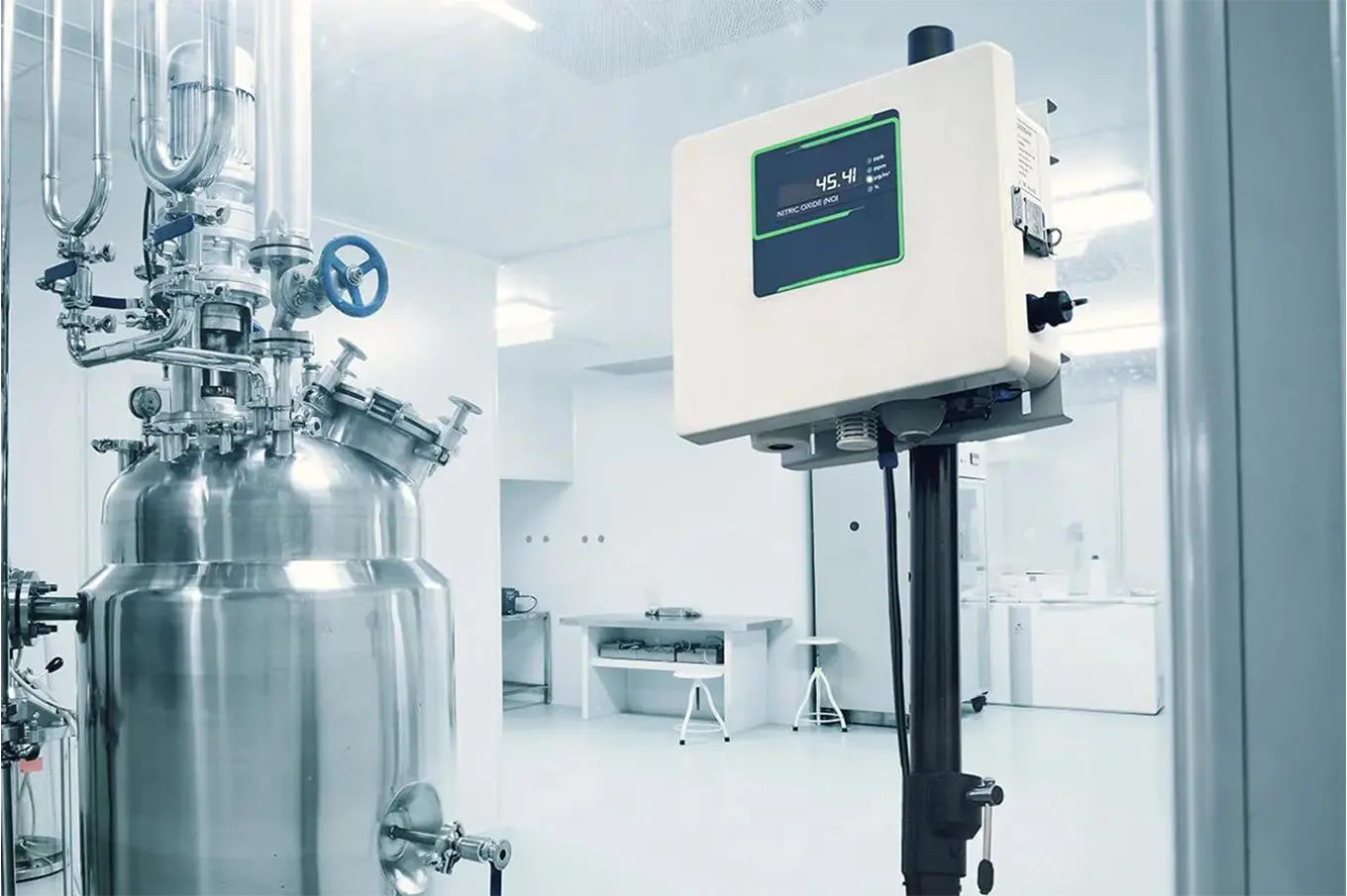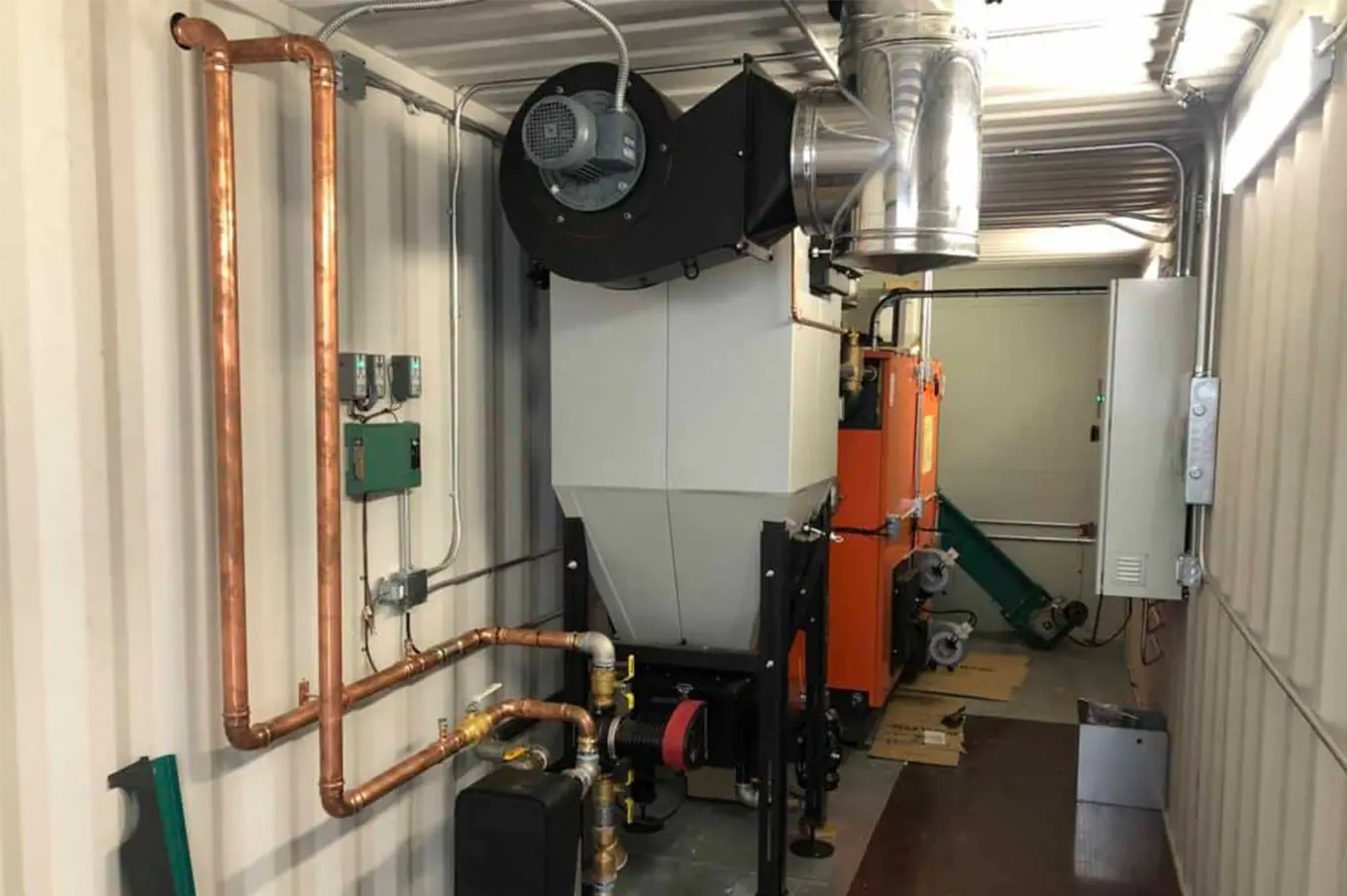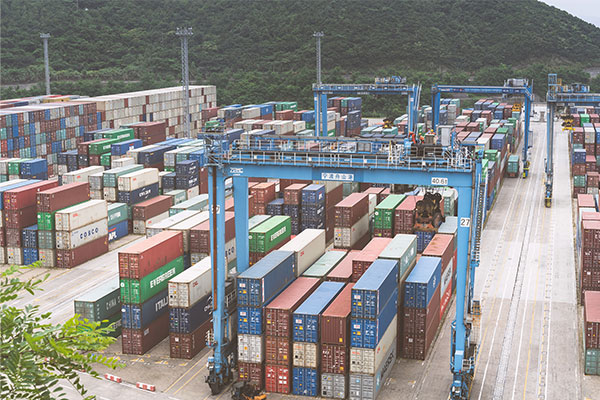- Shanghai Zhongshen International Trading Co., Ltd. – Your reliable partner with 20 years of import/export agency service expertise.

Exporting industrial incinerators to Le Havre Port: Professional solutions and market opportunities (Note: The translation retains the original structure and emphasizes the key points of "professional solutions" and "market opportunities" while adapting the phrase "至勒阿弗爾港" to "to Le Havre Port" for natural English expression.)
1. Introduction
An industrial incinerator is an environmentally friendly device for efficiently processing industrial waste. It converts waste into harmless substances through high-temperature combustion and is widely used in chemical, pharmaceutical, and municipal fields. As the largest container port in France, Le Havre Port is an important environmental protection hub in Europe.Equipment importThe hub is particularly suitable for the import and trade of large-scale environmental protection machinery and water treatment equipment. In customs classification, industrial incinerators are usually classified under the tariff code 841780, which belongs to non-electric industrial or laboratory furnaces and ovens.
Environmental Protection?Equipment Export?It involves complex international trade processes, from product classification and certification to logistics arrangements, each step of which requires professional knowledge. This is especially true for those who lack such expertise.Import and exportFor qualified enterprises, how to legally receive foreign exchange and handle related procedures?Tax RebatesSuch problems are even more insurmountable obstacles.Zhong Shen International Trade Co., Ltd.As a professional import and export trade service provider, we are committed to offering enterprises comprehensive solutions. We not only handle logistics and customs declaration processes, but more importantly, we address fundamental issues such as clients' "trading qualifications" and "cross-border capital flows".
2. Market Status and Trends
As an important import gateway for environmental protection equipment in Europe, the Port of Le Havre exhibits the following demand characteristics:
- The demand for efficient and low-emission industrial incinerators continues to grow, especially products that meet the EU's environmental standards are more popular
- France and other European countries have strict regulations on the treatment of industrial waste, which promotes the upgrading of environmental protection equipment
- The port has well-equipped supporting facilities, capable of handling the unloading and transfer of large-scale equipment
When entering this market, companies should pay attention to the following points:
- The product must comply with the EU CE certification and relevant environmental protection standards.
- It is necessary to prepare complete technical documents and compliance certificates.
- Understand the environmental protection regulations and import requirements of France and the European Union.
- Consider the localization needs of after-sales service and technical support
3. Main Process/Steps
The main process of exporting industrial incinerators to the port of Le Havre includes:
- Qualification preparation and contract signing
- Confirm the supplier's qualifications and production capacity
- Signforeign tradeThe contract clearly specifies the technical specifications and delivery conditions.
- Zhong Shen International Trade Co., Ltd. provides import and export agency services, solving the problem of clients not having import and export rights
- Product Certification and Quality Control
- Obtain the CE certification and other necessary certificates
- Carry out pre-shipment quality inspection
- Prepare product technical documentation and compliance certificates
- Logistics Arrangement and Packaging
- Develop professional packaging solutions to ensure safe long-distance transportation
- Arrange a suitable mode of transportation.Maritime transport/Air freight1) Port of departure and arrival 2) Vessel type and specification 3) Vessel's name 4) Voyage schedule and sailing dates 5) Vessel's current position 6) Vessel's estimated arrival time 7) Vessel's estimated departure time 8) Vessel's estimated transit time 9) Vessel's estimated arrival port 10) Vessel's estimated departure port 11) Vessel's estimated transit port 12) Vessel's estimated loading port 13) Vessel's estimated unloading port 14) Vessel's estimated layover port 15) Vessel's estimated waiting time 16) Vessel's estimated waiting period 17) Vessel's estimated waiting time at the port 18) Vessel's estimated waiting period at the port 19) Vessel's estimated waiting time at the port 20) Vessel's estimated waiting period at the port 21) Vessel's estimated waiting time at the port 22) Vessel's estimated waiting period at the port 23) Vessel's estimated waiting time at the port 24) Vessel's estimated waiting period at the port 25) Vessel's estimated waiting time at the port 26) Vessel's estimated waiting period at the port 27) Vessel's estimated waiting time at the port 28) Vessel's estimated waiting period at the port 29) Vessel's estimated waiting time at the port 30) Vessel's estimated waiting period at the port 31) Vessel's estimated waiting time at the port 32) Vessel's estimated waiting period at the port 33) Vessel's estimated waiting time at the port 34) Vessel's estimated waiting period at the port 35) Vessel's estimated waiting time at the port 36) Vessel's estimated waiting period at the port 37) Vessel's estimated waiting time at the port 38) Vessel's estimated waiting period at the port 39) Vessel's estimated waiting time at the port 40) Vessel's estimated waiting period at the port 41) Vessel's estimated waiting time at the port 42) Vessel's estimated waiting period at the port 43) Vessel's estimated waiting time at the port 44) Vessel's estimated waiting period at the port 45) Vessel's estimated waiting time at the port 46) Vessel's estimated waiting period at the port 47) Vessel's estimated waiting time at the port 48) Vessel's estimated waiting period at the port 49) Vessel's estimated waiting time at the port 50) Vessel's estimated waiting period at the port 51) Vessel's estimated waiting time at the port 52) Vessel's estimated waiting period at the port 53) Vessel's estimated waiting time at the port 54) Vessel's estimated waiting period at the port 55) Vessel's estimated waiting time at the port 56) Vessel's estimated waiting period at the port 57) Vessel's estimated waiting time at the port 58) Vessel's estimated waiting period at the port 59) Vessel's estimated waiting time at the port 60) Vessel's estimated waiting period at the port 61) Vessel's estimated waiting time at the port 62) Vessel's estimated waiting period at the port 63) Vessel's estimated waiting time at the port 64) Vessel's estimated waiting period at the port 65) Vessel's estimated waiting time at the port 66) Vessel's estimated waiting period at the port 67) Vessel's estimated waiting time at the port 68) Vessel's estimated waiting period at the port 69) Vessel's estimated waiting time at the port 70) Vessel's estimated waiting period at the port 71) Vessel's estimated waiting time at the port 72) Vessel's estimated waiting period at the port 73) Vessel's estimated waiting time at the port 74) Vessel's estimated waiting period at the port 75) Vessel's estimated waiting time at the port 76) Vessel's estimated waiting period at the port 77) Vessel's estimated waiting time at the port 78) Vessel's estimated waiting period at the port 79) Vessel's estimated waiting time at the port 80) Vessel's estimated waiting period at the port 81) Vessel's estimated waiting time at the port 82) Vessel's estimated waiting period at the port 83) Vessel's estimated waiting time at the port 84) Vessel's estimated waiting period at the port 85) Vessel's estimated waiting time at the port 86) Vessel's estimated waiting period at the port 87) Vessel's estimated waiting time at the port 88) Vessel's estimated waiting period at the port 89) Vessel's estimated waiting time at the port 90) Vessel's estimated waiting period at the port 91) Vessel's estimated waiting time at the port 92) Vessel's estimated waiting period at the port 93) Vessel's estimated waiting time at the port 94) Vessel's estimated waiting period at the port 95) Vessel's estimated waiting time at the port 96) Vessel's estimated waiting period at the port 97) Vessel's estimated waiting time at the port 98) Vessel's estimated waiting period at the port 99) Vessel's estimated waiting time at the port 100) Vessel's estimated waiting period at the port 101) Vessel's estimated waiting time at the port 102) Vessel's estimated waiting period at the port 103) Vessel's estimated waiting time at the port 104) Vessel's estimated waiting period at the port 105) Vessel's estimated waiting time at the port 106) Vessel's estimated waiting period at the port 107) Vessel's estimated waiting time at the port 108) Vessel's estimated waiting period at the port 109) Vessel's estimated waiting time at the port 110) Vessel's estimated waiting period at the port 111) Vessel's estimated waiting time at the port 112) Vessel's estimated waiting period at the port 113) Vessel's estimated waiting time at the port 114) Vessel's estimated waiting period at the port 115) Vessel's estimated waiting time at the port 116) Vessel's estimated waiting period at the port 117) Vessel's estimated waiting time at the port 118) Vessel's estimated waiting period at the port 119) Vessel's estimated waiting time at the port 120) Vessel's estimated waiting period at the port 121) Vessel's estimated waiting time at the port 122) Vessel's estimated waiting period at the port 123) Vessel's estimated waiting time at the port 124) Vessel's estimated waiting period at the port 125) Vessel's estimated waiting time at the port 126) Vessel's estimated waiting period at the port 127) Vessel's estimated waiting time at the port 128) Vessel's estimated waiting period at the port 129) Vessel's estimated waiting time at the port 130) Vessel's estimated waiting period at the port 131) Vessel's estimated waiting time at the port 132) Vessel's estimated waiting period at the port 133) Vessel's estimated waiting time at the port 134) Vessel's estimated waiting period at the port 135) Vessel's estimated waiting time at the port 136) Vessel's estimated waiting period at the port 137) Vessel's estimated waiting time at the port 138) Vessel's estimated waiting period at the port 139) Vessel's estimated waiting time at the port 140) Vessel's estimated waiting
- Arrange cargo transportation insurance
- Export ClearanceForeign exchange settlement
- Zhongshen International Trade uses its own qualifications to handle export customs declaration procedures.
- Collect the US dollar payments from overseas buyers on behalf of our clients
- Prepare a full set of export documents (invoices, packing lists, bills of lading, etc.)
- Import Customs Clearanceand delivery
- Prepare the documents required for customs clearance of French imports
- Pay customs duties and other import taxes and fees
- Arrange the unloading of goods at the port of Le Havre and the final delivery
- Export Tax Rebate Processing
- Zhongshen International Trade handles the entire export tax rebate process from start to finish.
- Return the full amount of the tax refund to the customer
- Provide a tax refund progress tracking service
4. Cost Breakdown
| Cost items | description | Optimization Plan for Zhongshen International Trade |
|---|---|---|
| Product Cost (FOB) | The factory price and domestic costs of industrial incinerators | Secure the best prices through the supplier network to reduce procurement costs |
| Certification/Testing Fees | CE certification, quality inspection, and other related expenses | Partnered certification bodies offer discounts, streamline procedures, and cut costs. |
| International Freight & Insurance | Ocean/Air Freight Charges and Cargo Transportation Insurance | Obtain preferential rates from long-term partner shipping companies/airlines |
| Tariffs and Taxes | Import tariffs and value-added tax in France | Through compliance-basedOrigin CertificateHandle the bookkeeping and optimize the tariff costs |
| Port charges | The loading and unloading, warehousing, and other related costs at the Port of Le Havre | Cooperate with local agents to reduce port operation costs |
| Agent service fee | InExport Agent ServicesService Fees | Transparent pricing and creating greater value for customers through export tax rebates |
5. Risks/Difficulties and Zhongshen International Trade’s Solutions
- Customs classification and certification risks
Potential causes:Industrial incinerators involve complex customs classification, which may be categorized into different chapters, resulting in differences in tax rates. The EU has strict environmental protection standards and high certification requirements.
Zhongshen International Trade Solutions:With 20 years of professional experience, we accurately classify products; provide one-stop certification services such as CE certification to ensure that products comply with EU standards; and our multilingual team communicates with local institutions to solve certification challenges.
- Payment and foreign exchange risk
Potential causes:The client does not have import and export qualifications, so they cannot directly receive foreign exchange payments. Moreover, exchange rate fluctuations affect transaction costs.
Zhongshen International Trade Solutions:As an agent, we use our qualifications to collect USD payments from overseas buyers; provide professional foreign exchange risk management advice; and ensure the safe and compliant transfer of funds.
- Logistics and Transportation Risks
Potential causes:Industrial incinerators are large in size and heavy in weight, and are prone to damage during transportation.International LogisticsThere are many steps and coordination is difficult.
Zhongshen International Trade Solutions:Professional packaging design ensures transportation safety; a global logistics network provides door-to-door services; a real-time tracking system monitors the status of goods throughout the entire process; and a diversified supplier portfolio reduces transportation risks.
- Export tax rebate risk
Potential causes:The tax refund process is complex, with strict requirements for documentation; the long refund cycle also impacts the cash flow of enterprises.
Zhongshen International Trade Solutions:The professional team handles the tax refund procedures throughout the process; ensures that all documents are complete and compliant; accelerates the tax refund process, and promptly returns the tax refund to clients, thereby improving their cash flow.
6. Suitable Business Types
Zhongshen International Trade’s industrial incinerator export services are especially well-suited for the following types of enterprises:
- An industrial incinerator manufacturer with production capacity but without import and export rights
- A trading company that has overseas customer resources but lacks export experience
- Brands that hope to focus on product R&D and sales, and outsource the foreign trade process
- An environmental-equipment company entering the international market for the first time
- Companies that need to optimize the export tax rebate process and improve the efficiency of fund utilization
7. Conclusion
With the increasing global awareness of environmental protection, environmental protection equipment such as industrial incinerators have broad prospects in the international market. The Port of Le Havre, as an important import hub for environmental protection equipment in Europe, provides Chinese enterprises with an excellent opportunity to enter the European market. However, complex international trade processes, strict certification requirements, and problems with capital flow often become obstacles for enterprises to expand their overseas business.
Zhong Shen International Trade not only provides traditional logistics and customs declaration services, but more importantly, it solves fundamental problems such as enterprises' "trading qualifications" and "cross-border capital flows". Through our professional services, enterprises can expand into international markets without worries, focus on their core business development, and at the same time enjoy the actual economic benefits brought by export tax rebates.
Contact us immediately to obtain a free initial consultation and quote for your industrial incinerator export business. Let Zhong Sheng International Trade become your reliable partner in expanding global markets!
Category Case
Contact Us
Email: service@sh-zhongshen.com
Related recommendations
Contact us on WhatsApp

? 2025. All Rights Reserved.









